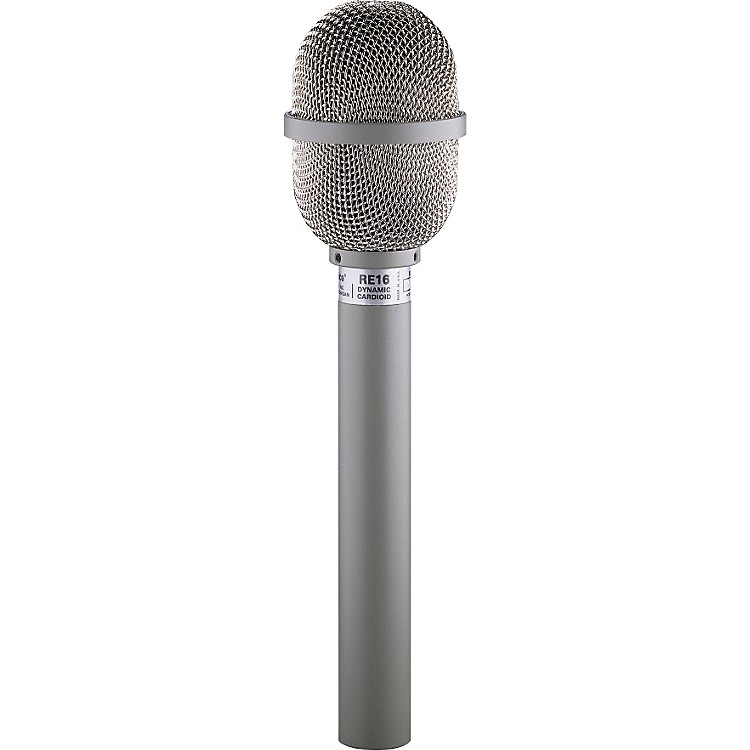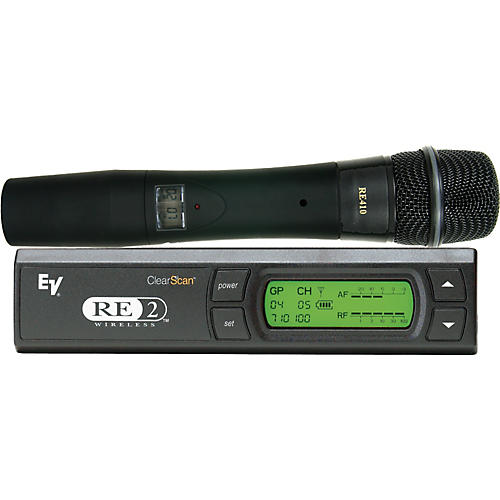Electro Voice Microphone Serial Numbers
The Electro-Voice RE27N/D is a professional-quality dynamic cardioid microphone designed for broadcast production announce and voice-over, high-quality recording and sound reinforcement applications. Great deals on Electro-Voice Vintage Pro Audio Microphones. It's a great time to upgrade your home music studio gear with the largest selection at eBay.com. Fast & Free shipping on many items! Pair of Vintage Electro-Voice 654a Microphones 300 Clips Matched Serial Lot #3. $13.20 shipping. Vintage 1985 Electro. 1940 Electro-Voice introduces the noise-cancelling microphone to the military, which revolutionizes tank and aircraft communications. In the aftermath of World War II, the company is awarded a Congressional Citation for this important contribution to the war effort. Energyrad.web.fc2.com › █ Electro Voice Serial Numbers █ The Electro-Voice Model 664 is a cardioid microphone of the dynamic type with only one moving element. It is designed specifically for public address applications. Urdu Poem For Child Free Download. Mercury 911 Microphone/PU Electro-Voice Inc.; USA, build 1950?, 5 pictures, 3 schematics, United States of America, tubes, semiconductors, Microphone.
| Founded | 1930 |
|---|---|
| Founders | Lou Burroughs, Albert R. Kahn |
| Headquarters | Burnsville, Minnesota, |
| Products | Pro audio, microphones, speakers, sound equipment |
| Owner | Telex Communications (Robert Bosch GmbH) |
| Website | www.electrovoice.com |
Electro-Voice (commonly referred to as EV) is an American manufacturer of audio equipment, including microphones, amplifiers, and loudspeakers, focused on pro audio applications such as sound reinforcement. As a subdivision of Telex Communications Inc. since February 1998, Electro-Voice markets products for use by consumers as well as small or large concert venues, broadcasting, houses of worship, and in retail situations.
History[edit]

On September 1, 1927, Lou Burroughs and Albert R. Kahn began a small business called Radio Engineers, servicing radioreceivers in the basement of the Century Tire and Rubber Company in South Bend, Indiana. Because of the Great Depression, according to Kahn, “We found ourselves insolvent to the extent of $5,000 ($76,524 today).[1] They decided to focus their business on audio products. The company designed a PA system for Notre Dame football coach Knute Rockne. Rockne, who had difficulty being heard at football practices due to health problems that affected his voice, called the new PA system his 'electric voice'. Rockne's remark inspired the company's name. On June 1, 1930, Burroughs and Kahn incorporated under the name 'Electro-Voice'.[2][3]
The partners recognized an opportunity to capitalize on what they perceived as the generally poor quality and high prices of existing microphones. They purchased a lathe and a drill and started producing about one microphone a week. Soon after, Burroughs withdrew from the business, leaving complete ownership to Kahn. By 1933, the previous business debts were completely paid off, and Electro-Voice began hiring manufacturing employees. In 1936, twenty people were hired, and Lou Burroughs returned as chief engineer.[4][5][3][1]
During World War II, EV developed the noise-canceling microphone. Noise cancelling microphones such as the Electro-Voice T45 lip microphone were instrumental to fighter and bomber airplane, tank, battleship and ground troop radio communications. EV licensed the patent to the government for free to be applied by other manufacturers to produce what was needed for the war supply.[6][1][4][7]
In 1946, the business moved to a bigger facility in Buchanan, Michigan and expanded its engineering efforts.[8] In 1948, they began successfully producing phonographpickup cartridges.[7] In 1950, they started production of the first automatic TV booster.[7][9] They also started to design and produce a consumer loudspeaker line in response to increased public interest in Hi-Fi music listening. In 1952, EV patented the Compound Diffraction Horn, which changed the look and performance the traditional cone-shaped paging horn.[10] Known for its high output, the CDP was deployed by the Navy on aircraft carriers and other high noise environments.[1]

In 1963, EV received an Academy Award for their 642 Cardiline shotgun microphone, the first ever given for an audio product.[7]
Electro-Voice launched its RE Series of microphones in 1968, most notably the RE-20, which continue to be extensively used in broadcasting applications. The RE series used 'Variable D' technology first developed by EV in 1953, which eliminated changes in tone and frequency response corresponding to changes in the physical distance of the sound source from the microphone[1][4]
In the early 1970s, EV developed the first commercial system for matrix four channel stereo called Stereo-4. When Columbia/CBS and Sony developed their Stereo Quadraphonic system (SQ) that system became the leading matrix system and Electro-Voice adapted their decoders so they also could play SQ records as well as Sansui's QS records. The EV system could also simulate four channel sound from two channel sources.[11]
Also in the 1970s, EV acquired TAPCO. The company, founded by Greg Mackie, specialized in audio mixers. TAPCO products soon became prominent in the EV product line.[1]
In 1978, Electro-Voice patented its Constant Directivity Horn, which produced an even balance of frequencies across the listening field. It overcame the uneven dispersion of high frequencies that affected the typical high frequency horns used in many professional sound speakers until the late seventies.[1]
In the late 1980s, EV became the first microphone manufacturer to use neodymium magnets in its microphones. The N/DYM microphones were introduced in the mid 1980s to combine the high output and high frequency response characteristics of condenser microphones with the rugged shock resistance of dynamic microphones. Around the same time EV's first wireless microphones were being produced.[1]
Mergers[edit]


The company merged with Telex Communications in 1998. Prior to the merger, EV was owned by Mark IV Industries, Inc. through its subsidiary, Gulton Industries, Inc.,[12] and had manufacturing plants in Buchanan, Michigan; Newport, Tennessee; Sevierville, Tennessee; and Gananoque, Ontario. Electro-Voice's headquarters were in Buchanan, Michigan until the merger with Telex Communications.[2][13]
In June 2006, EV, along with all of Telex Communications, became part of Bosch Security Systems division.[14] Today EV manufactures widely used broadcast microphones as well as loudspeakers and various other professional audio equipment.[15]
Superfund site[edit]
The former Electro-Voice facility in Buchanan, Michigan was engaged in die-casting, machining, assembly, painting and electroplating activities. The business closed in 2000. According to the EPA, 'contamination at the site resulted from Electro-Voice’s discharge of electroplating wastes into two clay-lined lagoons from 1952 to 1962, and from the disposal of paint wastes and solvents into a drywell from 1964 to 1973. The waste disposal activities caused groundwater to become contaminated with chemicals called volatile organic compounds, or VOCs. Following construction of the site’s long-term remedy, operation and maintenance activities and monitoring are ongoing'. Construction of the site’s long-term remedy finished in 1999, with the EPA reporting, 'soil cleanup included construction of a clay cap and active treatment by an in-place ventilation and volatilization system. Groundwater remediation is ongoing through monitored natural attenuation of pollutants'.[16]
Electro Voice Microphone Serial Numbers Download
See also[edit]
References[edit]
- ^ abcdefghClark, Keith. 'EV At 90: Powering The Passion Of Performance For Nine Decades (And Counting)'. ProSoundWeb. EH Publishing. Retrieved 2 March 2018.
- ^ ab'Electro-Voice plant closing in Buchanan'. South Bend Tribune. 2001-11-09. Archived from the original on 2001-11-10. Retrieved 2008-04-01.
- ^ ab'About Us'. electrovoice.com. Electro-Voice. Retrieved 1 March 2018.
- ^ abcClark, Keith. 'A Historical Look At Electro-Voice'. proaudioencyclopedia.com. Pro Audio Encyclopedia. Retrieved 2 March 2018.
- ^Frank Hoffmann (12 November 2004). Encyclopedia of Recorded Sound. Routledge. pp. 736–. ISBN978-1-135-94950-1.
- ^DB: The Sound Engineering Magazine. Sagamore Publishing Company. 1986.
- ^ abcdAl Kahn (1953). 'EV Company History'. Archived from the original on 2008-12-12.
- ^'City of Buchanan, Berrien County, Michigan Reconnaissance - Level Survey Report, September 2012'(PDF). www.locuspoke.us. City of Buchanan, Berrien County, Michigan. Retrieved 2 March 2018.
- ^Hearst Magazines (November 1950). Popular Mechanics. Hearst Magazines. pp. 227–.
- ^'Compound diffraction horn. Louis S. Hoodwin, Bridgman, Mich., assignor to Electro- Voice, Incorporated, Buchanan, Mich'. patents.google.com. US2856467A. Retrieved 3 March 2018.
- ^Nielsen Business Media, Inc. (16 January 1971). Billboard. Nielsen Business Media, Inc. pp. 90–.
- ^SEC Info - Mark IV Industries Inc - 10-K - For 2/29/96 - EX-21
- ^TELEX COMMUNICATIONS INC Annual Report
- ^Following the Telex Acquisition: Bosch Founds New Business Unit-Bosch Communications Systems-Established 1/1/2007 Electrovoice.com
- ^Jack W. Plunkett (August 2006). Plunkett's Telecommunications Industry Almanac 2007: Telecommunications Industry Market Research, Statistics, Trends & Leading Companies. Plunkett Research, Ltd. pp. 540–. ISBN978-1-59392-057-9.
- ^'ELECTROVOICE BUCHANAN, MI'. epa.gov. United States Environmental Protection Agency. Retrieved 2 March 2018.
External links[edit]
Electro Voice Microphone History
| Wikimedia Commons has media related to Electro-Voice. |
- NAMM Oral History Interview with founder, Al Kahn July 14, 2002
- NAMM Oral History Interview with Don Kirkendall July 14, 2002
- NAMM Oral History Interview with Paul McGuire May 13, 2010
- NAMM Oral History Interview with George Riley July 14, 2002